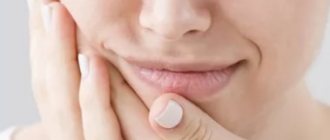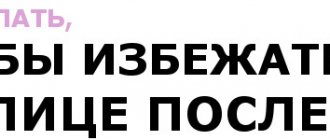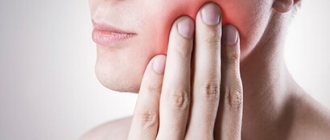An oral burn is damage to the oral mucosa through exposure to high temperature, chemicals, electrical or light radiation. This condition is extremely painful, as there are a large number of nerve endings in the mouth. The mucous tissue becomes swollen and red. Later, the burnt epithelium peels off and painful areas appear.
Treatment for a burn will depend on the extent of tissue damage and the area of spread of the injury. First of all, it will be aimed at neutralizing the cause of the injury and relieving the pain syndrome. Further treatment is aimed at preventing infection of the affected area and speeding up its healing.
Types of burns of ENT organs
Like any others, they are divided according to severity - from the first with minor damage to the severe fourth, up to tissue necrosis. The nature of the injuries depends on the temperature and concentration of the substance, as well as the time of contact with it.
Depending on the injured area, damage can be external, internal or combined. In the first case, the skin of the outer ear and wings of the nose is affected. In case of internal lesions, the nasopharynx, trachea, throat and larynx, and auditory canal are affected.
Taking into account the source, thermal and chemical injuries are distinguished. In the first case, the cause is contact with open fire, boiling water, hot oil, hot metal, etc. Chemical burns are more common. They occur if you swallow an acid or alkali, or inhale their vapors. They occur upon contact with aggressive household chemicals, vinegar essence, and ammonia.
Description and causes of injury
A laryngeal burn is damage to the mucous membranes that occurs as a result of exposure to high temperatures or aggressive chemicals. This injury is quite widespread in everyday life, because a burn to the pharynx can be caused by consuming hot food and drinks. Damage from alcohol or acetic acid, Lugol, iodine, caustic alkalis, and concentrated steam is often found.
Experts consider a chemical burn to the throat to be the most difficult in terms of treatment and further recovery. Even a visit to the dentist can provoke injury, for example, if arsenic or other potent drugs come into contact with the mucous membranes of the larynx.
Young children are also susceptible to this type of damage and, due to their curiosity, may well try household chemicals. According to the international classification, burn injuries to the throat are divided by specialists into 3 degrees:
- Burn of the nasal mucosa: causes, symptoms, treatment methods
- The first degree is characterized by redness of the larynx and swelling of the mucous membranes.
- The second degree - manifests itself with specific blisters and the formation of gray films on a red and swollen throat.
- Third degree - manifested by necrosis of the affected tissues. Muscle tissue, ligaments and cartilage tissue are affected.
Lesions of the larynx of the second and third degrees require competent and timely assistance to the victim. Otherwise, extremely serious consequences are possible in the form of an attack of suffocation, poisoning, scarring and even the death of the patient!
What is the danger
- If the mucous membranes of the throat or nose are affected, there is a high probability of swelling. It spreads quickly and makes breathing difficult. Up to the point of suffocation.
- When ingested or inhaled vapors of acids and alkalis, damage to the nasopharynx and throat is usually combined with deeper damage to the trachea, esophagus and other internal organs. Necrosis of esophageal tissue and perforation are possible.
- External burns cause intoxication and take a long time to heal without proper treatment. The wound surface becomes infected.
- If the lesions are strong and extensive, a painful shock occurs.
Treatment of children
For children, a throat burn has quite serious consequences, since they have a very narrow lumen of the larynx and pharynx. Therefore, as a result of even the most minor injury, swelling appears, which interferes with or even complicates the swallowing process. One of the most serious consequences is difficulty breathing.
At this moment, the child begins to grab his throat and actively gasp for air. He may lose consciousness. Therefore, parents or other adults should urgently call an ambulance, which will quickly provide qualified assistance.
For a baby, the healing process lasts much longer, since most often the burns are deep and serious, making it impossible to carry out some treatment methods. In addition, the child must visit a psychologist.
Alarming symptoms
If you have come into contact with a chemical or vapor, you should immediately contact a clinic. Otherwise, the condition will only get worse. There is a high probability of internal damage if:
- Severe, persistent pain appeared in the mouth, throat, and along the esophagus.
- When you swallow, the discomfort intensifies, and you can’t even drink the liquid.
- There is vomiting, especially with blood.
- Profuse salivation began.
- It became difficult to breathe.
- The temperature has risen (due to intoxication).
- Swelling of the mucous membrane.
- The victim is either drowsy or, on the contrary, restless.
- Severe burns of external tissues, blisters.
How does it manifest?
Doctors identify the following clinical symptoms that appear in a victim with a throat burn:
- Sharp pain in the throat, with a tendency to intensify when trying to swallow;
- Intense salivation;
- Nausea and vomiting;
- Cough syndrome;
- Pain localized in the chest area;
- Voice changes;
- Feeling of lack of air;
- Swelling of the cervical lymph nodes;
- A strong burning sensation in the palate;
- Hiccups.
In severe cases, a state of shock may develop. Even minor injuries can cause respiratory problems and cause suffocation, especially when it comes to a child or an elderly person.
Therefore, having identified the first symptoms characteristic of this injury, you should urgently provide first aid to the victim, then take him to a medical facility and transfer him to the hands of professionals.
Possible consequences
With this injury, patients are highly likely to develop complications and adverse consequences, which include:
- Chemical intoxication, poisoning;
- Collapse;
- Reflex cessation of breathing associated with damage to nerve endings;
- Scarring of the larynx, pharynx and esophagus area.
First aid for burns of the ears, nose, nasopharynx
If external damage of the first degree occurs, the skin is treated with a special product - ointment or foam. If necessary, you can take a pain reliever. If the damage to the integrity of the skin is more serious, you need to blot the surface with a weak solution of potassium permanganate and apply a dry sterile bandage. Next, seek medical help. The victim should drink more. Opening blisters is strictly prohibited - it will cause infection.
The degree of damage in internal burns is determined only by a doctor. Chemical injuries also require specialist supervision. If you know what caused it, then in the first minutes:
- The effect of alkali is neutralized with a weak solution of acid (1%) - citric, boric or acetic.
- If the cause is contact with acid, use alkali (2% baking soda solution).
- If there is no neutralizing agent, you can use ordinary boiled water for rinsing.
- When the cause is contact with quicklime, it is important to completely eliminate interaction with water. Use any vegetable oil.
- Medical assistance must be received within a maximum of six hours.
August 26, 2016 In case of a burn (chemical or thermal), difficulty swallowing, belching, and sometimes vomiting occur. Pain in the chest along the esophagus is possible, especially after eating. Redness and necrotic deposits appear in the oral cavity, esophagus, and pharynx, which bleed easily when eating. Life-threatening complications are possible: perforation of the esophagus and stomach wall, mediastinitis, peritonitis, laryngeal edema. After some time (if there are no complications - about 2 weeks), these signs subside, and a period of imaginary improvement begins (usually on the 8-12th day). The patient's condition is improving, he can eat not only liquid, but also solid food. However, after 2-4 months, a narrowing of the esophagus develops.
To prevent complications, much depends on the urgency and correctly carried out first aid measures, which consists, first of all, in eliminating the cause of the burn, stopping the action of thermal or chemical factors, and preventing complications - cicatricial changes in the esophagus, leading to its narrowing. At the first moment after a chemical burn of the esophagus, you need to drink plenty of fluids (in particular, milk), swallow pieces of ice, novocaine solution, vegetable oil, eat raw egg whites, and gargle with antiseptic agents.
The stomach must be rinsed immediately with a neutralizing liquid (through a tube). In case of acid poisoning, use an alkali, for example, a 10% solution of magnesium oxide (burnt magnesia), milk of lime. Alkalies are neutralized with acids, for example 0.1% solution of acetic or hydrochloric acid. In this case, a good result is observed in cases where neutralization is carried out in the first hours after the burn.
In case of shock development, cardiovascular drugs (corglycone, camphor, cardamine) and painkillers are prescribed. The patient is given humidified oxygen, an ice pack is placed on the epigastric region, and it is necessary to warm the patient and give him a warm drink.
To prevent irritation of the mucous membrane of the pharynx and esophagus, in the first time after a burn, food should be liquid, lightly salted, and then salt is gradually added to it. Fresh tea leaf juice, tea extract or powdered dry tea are effective.
What to do to prevent burns to the esophagus? To prevent burns, and subsequently narrowing of the esophagus and difficult operations to create an artificial esophagus from the patient’s intestines or skin, care must be taken in storing hazardous substances that cause burns. This especially applies to vinegar essence, caustic soda, and various acids. If these potent substances really need to be kept at home, then vinegar essence can be replaced with a weak solution of acetic acid, and caustic soda with washing powders. If you drink a large amount of poison, there can be not only complications, but also severe poisoning, leading to inevitable death, especially when help is late. All these substances should be stored where children are not, since it is they who often suffer from severe poisoning and burns of the esophagus, leading to disability. It is impossible to treat burns of the esophagus at home!
Treatment of burns of ENT organs
Even when it seems that the damage is minor, it is better to see an otolaryngologist. If the injury occurred due to contact with a complex chemical compound or an aggressive cleaning agent, then take the packaging with you. A specialist will study the composition of the substance.
For severe burns, antishock medications are indicated. If breathing is difficult, there is severe swelling, prednisolone or calcium chloride is used.
A tracheostomy is performed to restore breathing.
Medical appointments are conducted by ENT specialists with almost 10 years of experience. At your appointment, you will be treated with affected tissues and mucous membranes, and a pain reliever will be selected. If necessary, they will arrange a consultation with a surgeon or refer you to a hospital. The center is open all week, seven days a week.
First aid
A favorable outcome in treatment will depend on the speed of assistance, the nature and degree of mucosal burn. Initially, it is established what could have caused the injury. To do this, a visual examination of the room is carried out, the presence of a specific odor of the substance that caused the burn is taken into account.
If this does not give any result, then you need to examine the wound and the patient’s mucous membrane, carefully examine the vomit and the type of scab.
If the burn was caused by interaction with alkali, then the vomit will contain pieces of mucous tissue. When injured by iodine, they turn blue or brown. After a burn, a scab appears, the color of which can tell a lot:
- with acid burns it is yellow, that is, the injury occurred due to nitric or hydrochloric acid;
- for black - sulfuric acid, for white - hydrogen peroxide.
Once the agent that caused the burn has been accurately determined, measures can begin to eliminate the effect of this chemical. There are rules that should be remembered and followed immediately after a throat injury.
If the injury occurred as a result of boiling water or hot liquid, then the injured person should be given a glass of cold water to drink. To relieve pain, you need to give novocaine or lidocaine.
When injury occurs from various acids, it is necessary to give a lime mixture.
For alkaline burns - diluted citric acid.
The person must be provided with antiseptics and given a flow of fresh air.
If the burn is quite serious, it is necessary not to waste time, but to take the victim to the hospital, where doctors can quickly provide qualified medical care.
Nutrition and lifestyle during treatment and rehabilitation
A person should begin to follow a special diet so as not to aggravate the condition of a sore throat. A special diet will depend on the severity.
Sometimes the doctor may prescribe to eat food only in liquid form, rubbing it through a special grater or mixing it in a blender. Do not eat hot, spicy, sour or hard foods.
A person with a burnt throat should definitely eat oil about 4 times a day (vegetable or butter). To alleviate the condition, you can apply cold compresses to the damaged area. In this case, you should not strain your throat and maintain absolute silence for some time.
Classification
We use the following classification of caustic injuries of the esophagus:
- 0 - no damage
- 1 - erythema and swelling
- 2 - ulceration is not circular
- 3 - circular ulceration
- 4 - perforation
There are also more detailed classifications:
- 1st degree - erythema and edema (damage is limited to the superficial layers of the mucosa, their rejection with subsequent epithelization without scar formation is possible).
- 2a degree - vulnerability, hemorrhages, erosions, exudate, blistering (mucosal, submucosal and muscular layers are involved).
- 2b degree - the same as 2a plus deep or circular ulcers.
- Grade 3a - deep ulcers, “gray or black esophagus” (transmural lesion).
- Grade 3 - extensive necrosis.
Related articles:
- Articles: ENDODIAGNOSTICS FOR ESOPHAGUS BURNS WITH ALKALI
- Articles: FEDERAL CLINICAL GUIDELINES “Toxic effect of corrosive substances”, “Toxic effect of soaps and detergents” 2014
- Articles: Zargar classification - assessment of damage to the esophagus when swallowing caustic (caustic) substances
CLASSIFICATIONS section
Degrees
Based on the depth of tissue damage and the severity of symptoms, 3 degrees of throat burns are distinguished.
- Damage to the surface epithelium with hyperemia of the mucous membrane, the appearance of whitish areas on its surface. The injury is accompanied only by a slight burning sensation and soreness in the throat.
- Damage to the epithelium and submucosal tissues, formation of grayish blisters on the surface. With a burn, in addition to local symptoms, signs of intoxication occur (fever, headache). The blisters burst 1-2 weeks after the injury, leaving open wounds - erosions - in their place. During healing, small scars form on the tissues, but the functions of the organ are not impaired in the future.
- Damage to deep structures leads to the formation of dry (with temperature and acid exposure) or wet (with alkali burns) scab. Massive necrosis (death) of tissue causes severe poisoning of the body with toxins. After the scab is rejected, deep bleeding wounds remain on the surface. The healing of ulcers and erosions is accompanied by the formation of large scars, which subsequently impair swallowing function.
A burn of the mucous membrane of the throat of the 2nd and 3rd degree is a dangerous injury, which, if not treated correctly and/or untimely, leads to death due to asphyxia (suffocation) or severe intoxication.
When to perform endoscopic examination?
Initial endoscopic examination should be performed within the first 2-3 days after injury. Contraindications to it are: shock, respiratory disorders, perforation, mediastinitis.
In the period from 5 days to 3 weeks, during the repair stage, the wall of the esophagus is thinnest and the risk of perforation during endoscopy is very high, therefore, it is highly undesirable to perform it at this time. After three weeks, dense fibrous tissue usually forms and endoscopy becomes safer. In addition to endoscopic examination, radiography of the chest and abdominal cavity, clinical blood test, urea, and liver tests are indicated.










